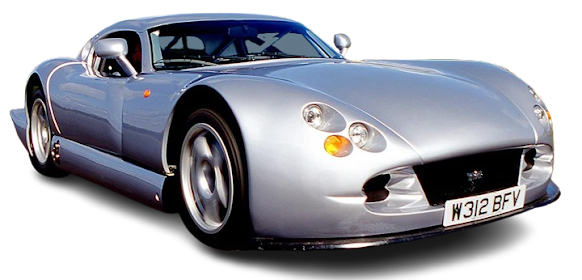TVR Cerbera Speed 12 (1997)
The TVR Cerbera Speed 12, initially revealed in 1997, stands as one of the most extreme road cars ever conceived. Built by the famously uncompromising British manufacturer TVR, the Speed 12 was a raw, unapologetic machine designed to compete with the likes of the McLaren F1, both on the road and on the track. With a monstrous V12 engine and minimal electronic assistance, it embodied everything TVR stood for: power, danger, and mechanical purity. Despite its brutal promise, the Speed 12 never reached full production — but it became a legend.
History
The Cerbera Speed 12 project began as Project 7/12 (7.7 litres, 12 cylinders), intended to create both a road-legal hypercar and a GT1-class race car. TVR’s founder Peter Wheeler envisioned a machine that could dominate Le Mans and then be driven home.
Unveiled at the 1996 Birmingham Motor Show as a concept, the car caused a sensation. It was quickly renamed Cerbera Speed 12, and TVR began development of both a road-going version and a GT1 racer. However, just as development progressed, FIA regulations for GT1 class changed, leading TVR to abandon its racing program and focus instead on a hypercar for the road.
In 2000, after further development and refinement, a road version was nearly ready — but during internal testing, Wheeler drove the prototype himself and deemed it too dangerous for the public. The project was cancelled, and all customer orders were refunded. Only one road-legal Speed 12 was ever completed and sold — making it one of the rarest and wildest street cars ever made.
Design Features
The Cerbera Speed 12’s design was a wild exaggeration of the already aggressive Cerbera. The body was widened, lowered, and completely reworked with lightweight carbon fiber and composite panels. It featured massive intakes, flared arches, deep side skirts, and a huge fixed rear wing.
The front end was dominated by TVR’s signature quad headlights and a wide, low grille feeding air to the front-mounted V12. The body shape was honed with racing in mind — not refinement — and included a flat underbody and an exaggerated diffuser.
The car sat on ultra-wide racing slicks, with custom magnesium wheels, racing-spec suspension, and massive carbon brakes. The cockpit was stripped and purposeful: a full roll cage, race buckets with harnesses, switchgear instead of buttons, and exposed carbon panels. There were no airbags, no ABS, no traction control — only a steering wheel, a gearstick, and raw power.
Specs
The core of the Cerbera Speed 12 was its 7.7-liter naturally aspirated V12 engine, created by merging two TVR Speed Six blocks onto a single crankshaft. The result was an engine of colossal size, weight, and power.
Official specs were never finalized, but dyno testing had to be abandoned because it broke the dyno at over 960 horsepower — with engineers estimating the final output to be over 1,000 hp.
Key (estimated) specifications:
-
Engine: 7.7L V12, naturally aspirated
-
Power: 1,000+ hp (estimated)
-
Torque: 881+ Nm
-
Weight: ~1,000–1,100 kg
-
0–100 km/h: ~2.9 seconds (estimated)
-
Top speed: ~386 km/h (240 mph)
-
Drivetrain: Rear-wheel drive
-
Transmission: 6-speed manual
-
Chassis: Steel spaceframe with carbon-fiber panels
-
Brakes: Carbon discs, race-grade calipers
The power-to-weight ratio was well over 900 hp/ton, putting it in a category well beyond anything else on the road at the time. It was designed to be faster than a McLaren F1 — with fewer filters and no safety nets.
Production Status
Although a small production run was initially planned, only one road-legal TVR Cerbera Speed 12 was ever completed and sold. That car was built using the chassis from the abandoned racing program and reworked for road use. It was sold to a private collector in 2003, on the condition that the buyer understood its extreme nature.
TVR destroyed most of the other prototypes and development chassis, though one or two survive in various states. The single registered Speed 12 remains road-legal and has been seen occasionally at events, track days, and exhibitions.
The car has since achieved cult status, viewed as the ultimate expression of TVR’s mad genius — a machine with no electronic interference, no compromise, and no equal in terms of raw, analog aggression.



Comments
Post a Comment